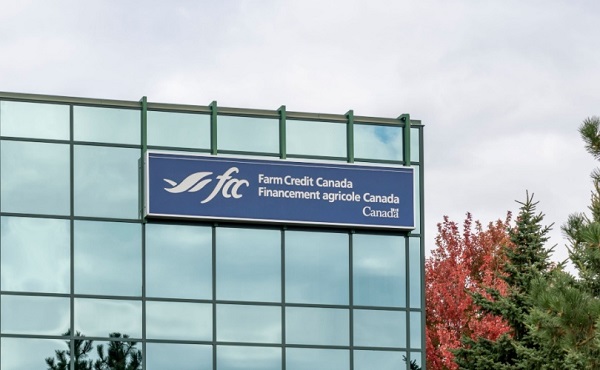Agriculture
UPDATE February 4: The Alberta SPCA lays more Charges in Horse Neglect Investigation

From the Alberta SPCA
The Alberta SPCA lays additional 27 charges against third individual in connection to Horse Neglect Investigation
***Update***
The Alberta SPCA has laid an additional 27 charges under the Animal Protection Act against a third person in connection with a horse neglect investigation. CORNELL, Robert Hugh (60) of the Evansburg area faces nine charges of causing an animal to be in distress 2(1), nine charges of failing to provide adequate food and water 2.1(a), and nine charges of failing to provide adequate care when an animal is wounded or ill 2.1(b). Cornell is scheduled to appear in Evansburg court on March 11, 2019
***Original Release***
The Alberta SPCA has laid 54 charges against two people in connection with horses in distress on two properties west of Edmonton. Charged are MOORE, Patricia Lynn (48), and ATKINSON, Ross Andrew (50) of the Evansburg area.
In early December 2018, The Alberta SPCA received a complaint from a member of the public of numerous horses in distress or dead on a property in the Evansburg area. Peace Officers attended and their investigation led the Peace Officers to a second property in the same area. As a result of the investigation, the Alberta SPCA has laid 27 charges each against the two individuals listed above under the Animal Protection Act (APA) of Alberta. Each individual faces nine charges of causing an animal to be in distress 2(1), nine charges of failing to provide adequate food and water 2.1(a), and nine charges of failing to provide adequate care when an animal is wounded or ill 2.1(b).
The two persons charged are scheduled to appear in Evansburg court on March 11, 2019.
We would also like to note that there was a lot of false information circulating on social media during the investigation that often became a distraction to the work of our Peace Officers. Our time and resources were often diverted to deal with these rumours, taking away from our ability to manage other investigations in the province. Proper investigations take time and often involve the gathering of forensic evidence. Our Peace Officers always appreciate the patience and understanding of the public when we are gathering evidence to support laying charges.
The Alberta SPCA has laid 54 charges against two people in connection with horses in distress on two properties west of Edmonton.
Charged are MOORE, Patricia Lynn (48), and ATKINSON, Ross Andrew (50) of the Evansburg area.
In early December 2018, The Alberta SPCA received a complaint from a member of the public of numerous horses in distress or dead on a property in the Evansburg area. Peace Officers attended and their investigation led the Peace Officers to a second property in the same area. As a result of the investigation, the Alberta SPCA has laid 27 charges each against the two individuals listed above under the Animal Protection Act (APA) of Alberta. Each individual faces nine charges of causing an animal to be in distress 2(1), nine charges of failing to provide adequate food and water 2.1(a), and nine charges of failing to provide adequate care when an animal is wounded or ill 2.1(b).
The two persons charged are scheduled to appear in Evansburg court on March 11, 2019.
We would also like to note that there was a lot of false information circulating on social media during the investigation that often became a distraction to the work of our Peace Officers. Our time and resources were often diverted to deal with these rumours, taking away from our ability to manage other investigations in the province. Proper investigations take time and often involve the gathering of forensic evidence. Our Peace Officers always appreciate the patience and understanding of the public when we are gathering evidence to support laying charges.
Agriculture
Health Canada pauses plan to sell unlabeled cloned meat

From LifeSiteNews
Health Canada has indefinitely paused its plan to allow unlabeled cloned meat in grocery stores after thousands of Canadians, prominent figures, and industry leaders condemned the move.
Health Canada is pausing its plan to put unlabeled cloned meat in Canadian grocery stores, following public outcry.
In a November 19 update on its website, Health Canada announced an indefinite suspension of the decision to remove labels from cloned meat products after thousands of Canadians condemned the plan online.
“The Government of Canada has received significant input from both consumers and industry about the implications of this potential policy update,” the publication read. “The Department has therefore indefinitely paused the policy update to provide time for further discussions and consideration,” it continued, adding, “Until the policy is updated, foods made from cloned cattle and swine will remain subject to the novel food assessment.”
In late October, Health Canada quietly approved removing labels from foods derived from somatic cell nuclear transfer (SCNT) clones and their offspring. As a result, Canadians buying meat from the grocery store would have had no way of knowing if the product was cloned meat.
Many researchers have documented high rates of cloning failure, large offspring syndrome (LOS), placental abnormalities, early death, and organ defects in cloned animals. The animals are also administered heavy doses of antibiotics due to infections and immune issues.
Typically, the offspring of cloned animals, rather than the cloned animals themselves, are processed for human consumption. As a result, researchers allege that the health defects and high drug use does not affect the final product.
However, there are no comprehensive human studies on the effects of eating cloned meat, meaning that the side-effects for humans are unknown.
News of the plan spread quickly on social media, with thousands of Canadians condemning the plan and promising to switch to local meat providers.
“By authorizing the sale of meat from cloned animals without mandatory labeling or a formal public announcement, Health Canada risks repeating a familiar and costly failure in risk communication. Deeply disappointing,” food policy expert and professor at Dalhousie University Sylvain Charlebois wrote on X.
"By authorizing the sale of meat from cloned animals without mandatory labeling or a formal public announcement, Health Canada risks repeating a familiar and costly failure in risk communication. Deeply disappointing."
More on this week's Food Professor Podcast! https://t.co/UZTIcQzUN3
— The Food Professor (@FoodProfessor) October 30, 2025
Likewise, Conservative MP Leslyn Lewis warned, “Health Canada recently decided that meat from cloned animals and their offspring no longer needs a special review or any form of disclosure.”
“That means, soon you could buy beef or pork and have no idea how it was bred,” she continued. “Other countries debate this openly: the EU has considered strict labelling, and even the U.S. has admitted that cloned-offspring meat is circulating.”
“But here in Canada, the public wasn’t even told. This is about informed choice,” Lewis declared. “If government and industry don’t have to tell us when meat comes from cloned animals, then Canadians need to ask a simple, honest question: What else are we not being told?”
Health Canada recently decided that meat from cloned animals and their offspring no longer needs a special review or any form of disclosure. That means, soon you could buy beef or pork and have no idea how it was bred.
Other countries debate this openly: the EU has considered… pic.twitter.com/zCnqJOpvf3
— Dr. Leslyn Lewis (@LeslynLewis) November 14, 2025
Likewise, duBreton, a leading North American supplier of organic pork based out of Quebec, denounced the move, saying, “Canadians expect clarity, transparency, and meaningful consultation on issues that directly touch their food supply. As producers, we consider it our responsibility and believe our governing food authorities should too.”
According to a survey conducted by duBreton, 74 percent of Canadians believe that “cloned meat and genetic editing practices have no place in farm and food systems.”
Agriculture
Federal cabinet calls for Canadian bank used primarily by white farmers to be more diverse

From LifeSiteNews
A finance department review suggested women, youth, Indigenous, LGBTQ, Black and racialized entrepreneurs are underserved by Farm Credit Canada.
The Cabinet of Prime Minister Mark Carney said in a note that a Canadian Crown bank mostly used by farmers is too “white” and not diverse enough in its lending to “traditionally underrepresented groups” such as LGBT minorities.
Farm Credit Canada Regina, in Saskatchewan, is used by thousands of farmers, yet federal cabinet overseers claim its loan portfolio needs greater diversity.
The finance department note, which aims to make amendments to the Farm Credit Canada Act, claims that agriculture is “predominantly older white men.”
Proposed changes to the Act mean the government will mandate “regular legislative reviews to ensure alignment with the needs of the agriculture and agri-food sector.”
“Farm operators are predominantly older white men and farm families tend to have higher average incomes compared to all Canadians,” the note reads.
“Traditionally underrepresented groups such as women, youth, Indigenous, LGBTQ, and Black and racialized entrepreneurs may particularly benefit from regular legislative reviews to better enable Farm Credit Canada to align its activities with their specific needs.”
The text includes no legal amendment, and the finance department did not say why it was brought forward or who asked for the changes.
Canadian census data shows that there are only 590,710 farmers and their families, a number that keeps going down. The average farmer is a 55-year-old male and predominantly Christian, either Catholic or from the United Church.
Data shows that 6.9 percent of farmers are immigrants, with about 3.7 percent being “from racialized groups.”
National census data from 2021 indicates that about four percent of Canadians say they are LGBT; however, those who are farmers is not stated.
Historically, most farmers in Canada are multi-generational descendants of Christian/Catholic Europeans who came to Canada in the mid to late 1800s, mainly from the United Kingdom, Ireland, Ukraine, Russia, Italy, Poland, the Netherlands, Germany, and France.
-

 Daily Caller2 days ago
Daily Caller2 days agoTech Mogul Gives $6 Billion To 25 Million Kids To Boost Trump Investment Accounts
-

 Alberta2 days ago
Alberta2 days agoAlberta will defend law-abiding gun owners who defend themselves
-

 Business2 days ago
Business2 days agoCanada’s future prosperity runs through the northwest coast
-

 Alberta1 day ago
Alberta1 day agoThis new Canada–Alberta pipeline agreement will cost you more than you think
-

 National2 days ago
National2 days agoCanada Needs an Alternative to Carney’s One Man Show
-

 MAiD1 day ago
MAiD1 day agoFrom Exception to Routine. Why Canada’s State-Assisted Suicide Regime Demands a Human-Rights Review
-

 Business1 day ago
Business1 day agoNew Chevy ad celebrates marriage, raising children
-

 Automotive1 day ago
Automotive1 day agoPower Struggle: Governments start quietly backing away from EV mandates





